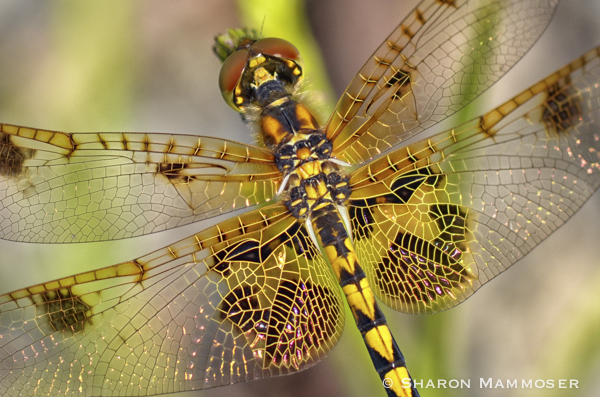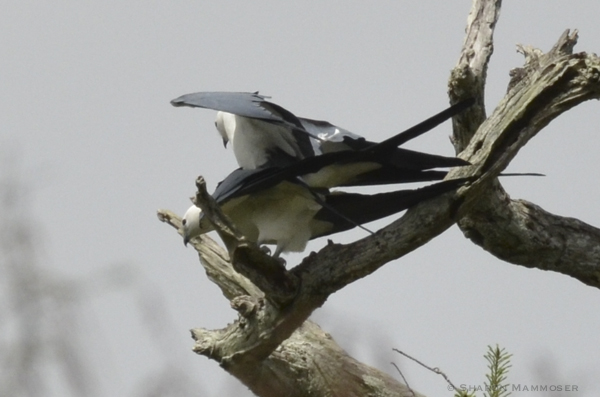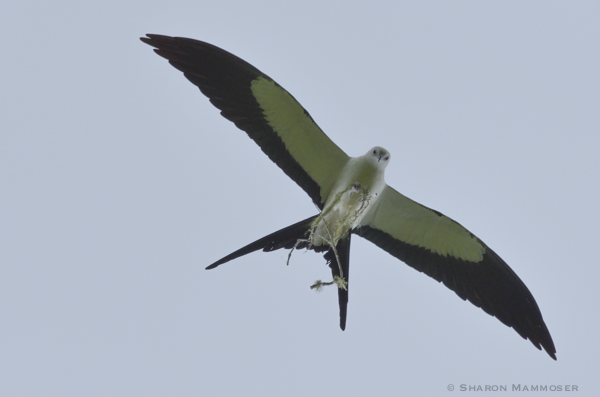Last week’s puzzler was a swallow-tailed kite–a bird I suspect some readers may never have seen or even heard of. That’s because it is not common in most of the United States.
 Have you ever had the pleasure of watching a swallow-tailed kite soar in the sky above you? It is quite a sight to see as these beautiful birds are so graceful.
Have you ever had the pleasure of watching a swallow-tailed kite soar in the sky above you? It is quite a sight to see as these beautiful birds are so graceful.
Let’s look at a few interesting things about these birds:
- Before 1900 these birds could be found in 21 states, their range extending from Florida and the Gulf Coast states all the way up to Minnesota. These days you can find them in only a handful of states– Louisiana, Alabama, Georgia, South Carolina, Mississippi, Texas and Florida. Their range also includes Central and South America and the west Indies.
- Some swallow-tailed kites spend summers breeding in North America and then migrate to northern South America. Florida has the highest population of kites and you can see them there only from March-September.
- Swallow-tailed kites are the largest species of kite in America. They can be 19-24 inches long, which includes their forked tail that is 12-15 inches long. They have a wingspan of 50 inches.
 Swallow-tailed kites eat almost all of their food on the wing. Have you ever watched a dragonfly in flight? If so then you know what amazing flyers they are, twisting and turning and darting about so quickly that it’s hard to imagine anything ever being able to catch them. But swallow-tailed kites do! They chase them and then snag them in mid-air! (the same way dragonflies catch their prey!) Also on their menu are butterflies, beetles,bees, wasps, other insects, frogs, lizards, snakes, small birds and less often, bats, fruit and small fish.
Swallow-tailed kites eat almost all of their food on the wing. Have you ever watched a dragonfly in flight? If so then you know what amazing flyers they are, twisting and turning and darting about so quickly that it’s hard to imagine anything ever being able to catch them. But swallow-tailed kites do! They chase them and then snag them in mid-air! (the same way dragonflies catch their prey!) Also on their menu are butterflies, beetles,bees, wasps, other insects, frogs, lizards, snakes, small birds and less often, bats, fruit and small fish.- They also drink while they are flying! To do this they glide low above the body of water and open their beaks.
- They build nests high in dead trees–often a 100 feet from the ground! They often nest in loose colonies with other kites, usually by water.
- Both males and females incubate and feed the growing babies. Their incubation is 28-30 days–a long time if you’re a bird used to soaring through the sky! Chicks leave the nest to take their first flight at around 40 days after hatching.
- Have you ever heard of obligate siblicide? Me either, but in studying this bird I came across this term. Many females lay two eggs. The one that hatches first often kills the other one so it can have all of the food and attention from its parents. Talk about extreme! But in nature, it’s just another adaptation that equals success.
-

Two swallow-tailed kites mating Mating for kites (and many other birds) is a SUPER QUICK affair! I was in Florida a couple of years ago in early spring and was watching some swallow-tailed kites wheel around in the sky. All of a sudden one landed on the top of a very tall dead tree, then another quickly landed there too–on top of the first one! They were together for less than 30 seconds, and then both flew off. A bit later a kite flew overhead with a stick, obviously ready to build a nest. Talk about a quick courtship!
- Males and females look similar.

A kite with nesting material


So fascinating as always to learn about a bird I didn’t previous know a lot about! Thanks Sharon!
YOu are quite welcome, Lisa. Thanks for reading!!